January 7, 2020
Office design continues to become more and more important as companies vie for talent in one of the most competitive hiring markets we have seen. This trend has touched nearly every industry that occupies office space and has trickled down from tech and design firms to include even the most traditional professional services firms. Some data has shown that millennials are three times more likely to trade-up jobs than previous generations. Culture, perks, amenities, work environment are among some of the driving factors beyond the basics of pay, benefits and growth opportunities.
Here are the Top 8 Design Trends we see with our Tenant clients as they navigate with staying relevant and competitive.
- Private Offices – Office sizes have been shrinking for years and uniformity in size and design is here to stay. Unlike the previous generation of office environments, we rarely see huge disparity between partners and associates, executives and mid-level management. Same-sized private offices allow for ease in moving teams around to accommodate growth and create more flexibility. Additionally, the desire to create a better lighted and inviting work environments has caused most offices to be put on the interior, no longer lining the exterior glass line.
- Glass Panels – Glass office and conference room fronts have become a must-have for even the most bare-bones of office designs. The use of glass panels creates more connectivity and openness throughout the space and opposes the closed-door culture of the past. The challenge is that Glass Systems can be extremely expensive, so balancing the amount and type of glass based on budget constraints is typically a must.
- Ceiling – Historically, ceilings were almost unanimously constructed with a 2×2 tile grid system throughout. This system does provide for better acoustic quality than the now popular open grid system. We are seeing clients strike a balance, utilizing some open ceiling, some acoustical tile, cloud systems, white noise, and other architectural features to provide interest, as well as acoustical qualities.
- Lighting – Natural light is at the forefront of most design work. By pulling offices off the glass line and implementing more glass systems in offices and conference rooms, most Tenants have been able to dramatically increase the amount of natural light within a space. In addition, Tenants are using a variety of architectural lighting beyond just the reception area, including collaborative areas, lounge spaces, amenity spaces, break and coffee areas.
- Flooring – Tenants have long since forgone the traditional carpeted office for solid surfaces like tile and concrete, LVT products in a variety of colors and design, and carpet tiles. The key is variation in surfaces to delineate different space used throughout the office.
- Collaborative Meeting Space – Collaborative space has been popular term for years, and it continues to be implemented in a variety of ways throughout office space. Many spaces offer a variety of options for their staff, often including lounge space, hightop seating, conference space, stadium and bench seating, among other options. Tenants like to have flexible spaces that can be used for a variety of uses throughout the week, which allows for less overall space.
- Phone Rooms – With the continual push for open space concepts, privacy is always of concern. Though space design and furniture design has allowed a open concept space to be less “cube-farm”-like, Tenants often still need a place where staff can make private calls. Rather than relegating your employees to the parking lot or hallway, many organizations have followed the co-working trend with phone booths or phone rooms instead.
- Hospitality – In recent years especially, design has shifted to be more hospitality driven. Many companies want their office to feel like an office-y version of your home. We are seeing residential style seating, kitchen islands, lighting, coffee stations, all meant to mimic how we live at home or how we vacation, with a hospitality feel.
Written by: Bo Hargrove








